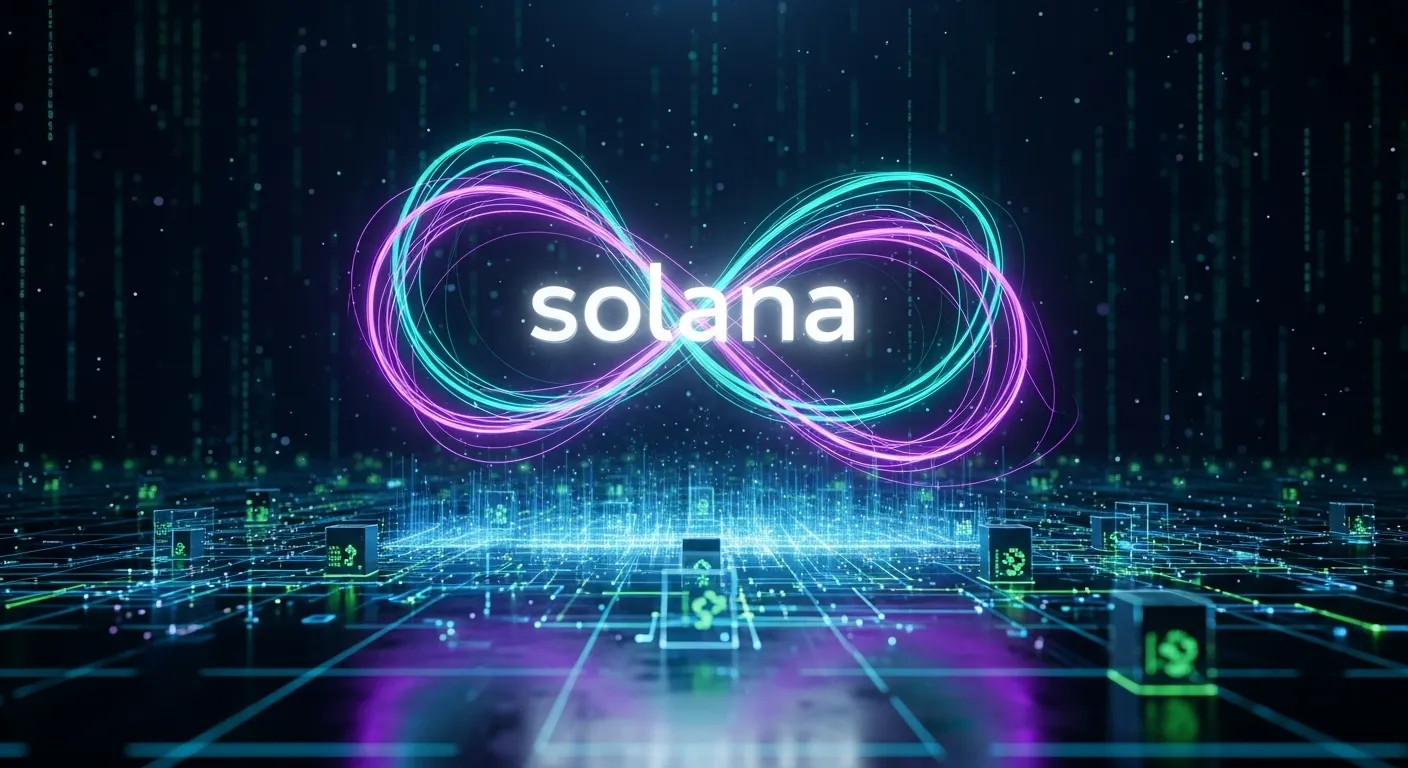When immersed in the deep analysis of the cryptocurrency market, the realization of the perpetual competition between Solana and Ethereum becomes undeniable a contest akin to a high-stakes race between two technologically distinct vehicles. In 2025, Solana’s foundational architecture, designed for blazing transaction speed and remarkably low costs, commands immense attention, while Ethereum’s established, rigorous security and unparalleled decentralization ensure its continued prominence. The central strategic question for the entire ecosystem is which of these two titans will ultimately secure the future of decentralized computing: the one prioritizing raw performance or the one prioritizing resilience and security.
The Architectural Dichotomy: PoH vs. PoS Security
Solana and Ethereum represent two fundamentally divergent technological philosophies. Solana’s engine is its Proof of History (PoH) mechanism, a sophisticated timekeeping system that, when integrated with its Proof-of-Stake (PoS) consensus and parallel execution environment (Sealevel), enables a throughput exceeding 50,000 Transactions Per Second (TPS). This speed and efficiency, resulting in near-zero transaction fees, makes Solana the ideal platform for latency-sensitive applications like GameFi (blockchain gaming) and high-frequency Decentralized Exchanges (DEXs). Ethereum, post-Merge (the shift to PoS), functions as a meticulously secured, classic foundation. While its Layer 1 TPS is significantly lower, its security is guaranteed by a vast, widely distributed network of validators and a multi-year track record of battle-tested resilience. Ethereum’s scaling solution focuses on Layer 2 rollups (e.g., Arbitrum, Optimism), which execute transactions quickly off-chain but settle securely on the highly decentralized Ethereum Layer 1 base chain. Although Layer 2s accelerate Ethereum's user experience, they fundamentally do not match Solana's raw, Layer 1 speed. This architectural dichotomy highlights the core trade-off between the 'Speed' offered by Solana and the 'Bulletproof Security and Decentralization' offered by Ethereum.
Strategic Market Importance and Ecosystem Metrics
This debate is crucial because the choice between speed and security dictates the future development of the Web3 economy. Solana’s Formula 1 speed makes it a magnet for consumer-facing DApps NFT marketplaces (like Magic Eden) and high-volume DeFi protocols (like Raydium and Orca). Developers are drawn to the low friction and the ability to innovate rapidly without fear of crippling gas fees. Ethereum, however, retains its undisputed dominance in Total Value Locked (TVL), with its TVL still significantly dwarfing Solana’s, indicating deeper monetary trust from institutions and large capital holders. Ethereum's ecosystem is supported by an unparalleled developer tooling suite and a larger, more experienced developer base. The competition is visible in metrics: investors track Solscan for Solana’s TPS and Etherscan/L2Beat for Ethereum’s Layer 2 activity and TVL growth. The choice of which network to utilize often comes down to the application's priority: speed for gaming, or maximum security for multi-billion dollar DeFi protocols.
Structural Risks and The Necessity of Firedancer
Solana’s historical path has been marred by recurring network outages and temporary halts, which constitute its primary structural risk. These incidents raised legitimate concerns about network stability and, fundamentally, its degree of decentralization. Since running a Solana validator requires extremely high hardware specifications, there is an inherent financial barrier to entry, which has led to a more centralized validator set compared to Ethereum. Ethereum's strategy of low hardware requirements for validators promotes wider geographic and organizational decentralization. Solana’s aggressive mitigation strategy focuses on the development and imminent deployment of Firedancer, a new, highly performant validator client developed by Jump Crypto. Firedancer aims to introduce client diversity and significantly enhance network resilience and fault tolerance, effectively addressing the historical stability concerns. The successful rollout of Firedancer is a non-negotiable step toward securing institutional trust and maintaining long-term competitiveness against Ethereum.
Historical Case Studies and Investor Sentiment
The 2021 market surge illustrated the dramatic potential of both. Solana’s parabolic rise (from 4 to 260) was a direct consequence of its technical superiority in speed, which attracted a massive developer and user influx, particularly for NFTs. Yet, the subsequent network halts during peak load eroded user trust. Ethereum, while slower, demonstrated superior stability throughout the same period, confirming its value proposition as a reliable settlement layer. The market’s reaction institutional investors favoring Ethereum ETFs and major capital remaining locked in Ethereum DeFi indicates that security and proven longevity are prioritized over peak speed. The core lesson is clear: for decentralized money, trust in the security layer is paramount, while speed can often be delegated to Layer 2 solutions.
Investment Strategy in the Dual-Chain Era
For investors seeking to capitalize on this ongoing rivalry, a diversified, nuanced strategy is optimal. High-growth, high-risk capital may favor the SOL token, betting on the successful execution of Firedancer and continued GameFi dominance. This is a bet on raw performance capturing market share. Conversely, investors prioritizing stability, security, and institutional acceptance should focus on ETH, viewing it as the most secure, deflationary foundational asset. Staking in both ecosystems offers passive yield, but the security guarantee differs. Trading strategies must rigorously integrate risk management; utilizing stop-loss orders below critical structural supports (e.g., 820 for BNB, 0.20 for DOGE, or key SOL supports) is essential to navigate the high volatility inherent in high-beta assets. The long-term market structure suggests a multi-chain future where Ethereum operates as the high-security settlement layer and Solana functions as the high-speed execution layer for mass-market applications.
Final Conclusion: The Pursuit of Network Maturity
Solana and Ethereum represent two essential models for the future of decentralized computing. Solana’s speed is transformational for specific high-frequency applications, making it a critical Layer 1. Ethereum’s security and decentralized structure remain the ultimate standard for securing value. The key to Solana’s continued ascent is the successful elimination of stability risks via Firedancer and achieving greater validator decentralization. The final outcome of the 'speed vs. security' debate may not be a winner-take-all scenario, but rather a functional specialization: Ethereum for high-value settlement and Solana for high-volume execution. Both are champions, but their roles in the crypto hierarchy are distinct and determined by their core architectural trade-offs.

